How Supplier Location Intelligence Drives Sustainability
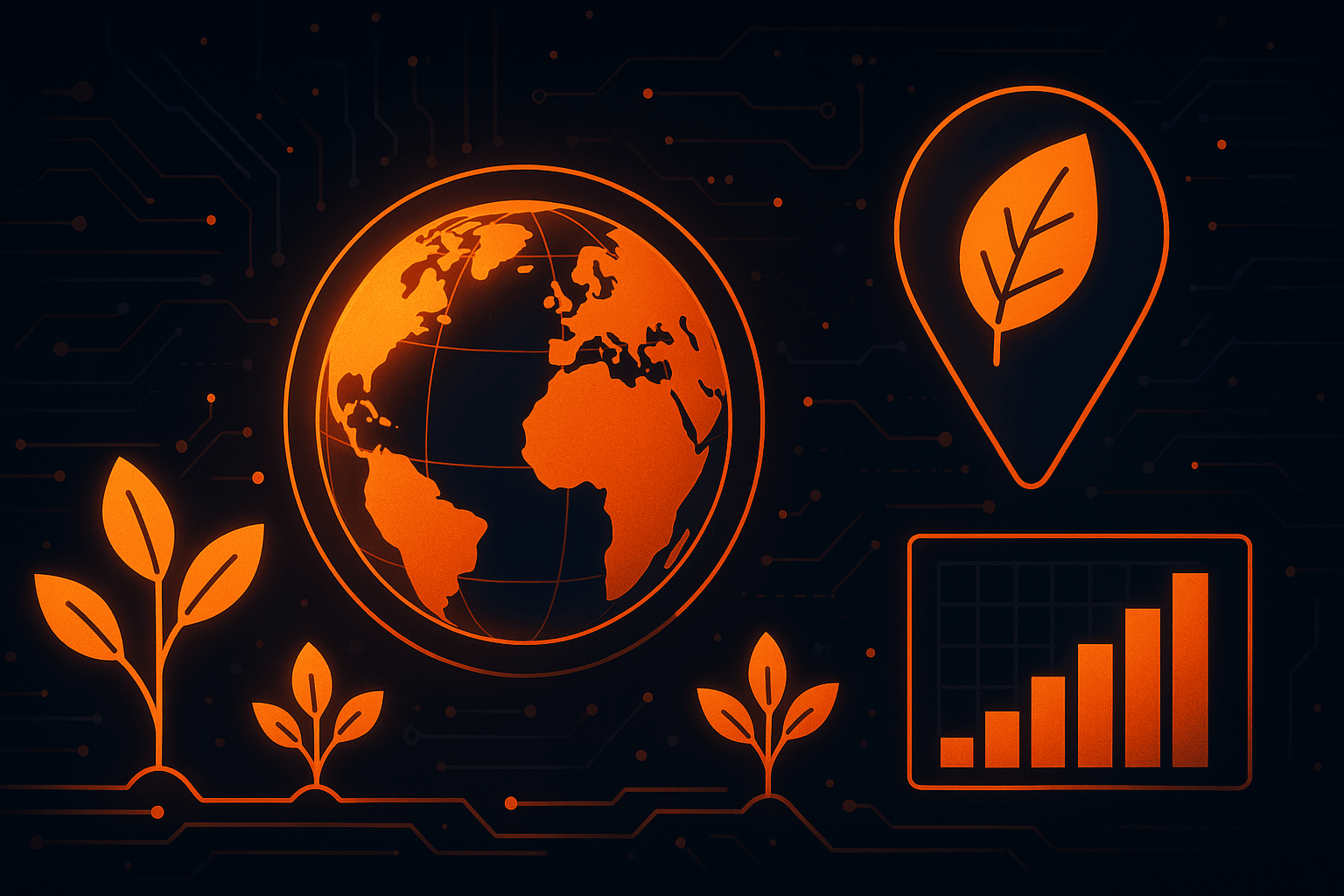

Key Takeaways:
A supplier’s location can tell you a lot, from transport-related emissions to exposure to labor and environmental risks.
As sustainability expectations rise, companies need smarter ways to assess supplier impact.
That’s where location intelligence makes a difference.
By combining supplier geography with ESG data, businesses can make better decisions, reduce risk, and build more sustainable and resilient supply chains.
In this article, we’ll explore five key ways supplier location intelligence helps drive real sustainability outcomes.
The most direct advantage of supplier location intelligence is the ability to select suppliers closer to your operations.
This shortens supply chains, reducing transport emissions, cutting costs, and improving response times.
But location isn’t just a logistical factor—it’s also a key sustainability variable.
Where a supplier is registered and where its production sites are actually located can influence emissions intensity, labor protections, environmental risk exposure, and infrastructure access.
That’s why even a single coordinate (or multiple for global suppliers) can reveal a lot about a supplier’s ESG profile, as the image below shows.
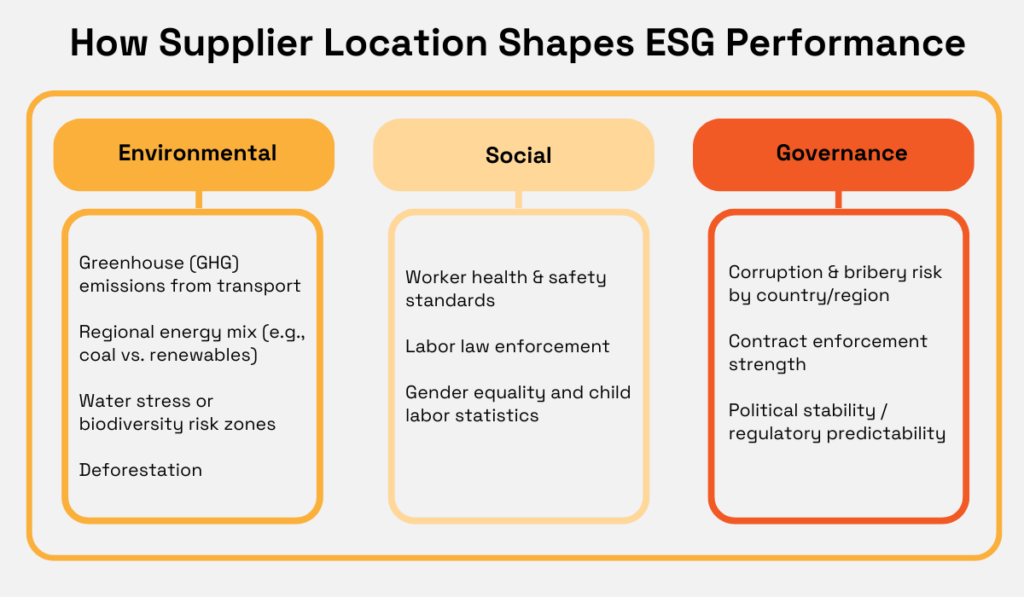
Source: Veridion
To illustrate the connection between supplier location and sustainability performance, consider a few practical examples:
Suppliers operating in coal-reliant regions are more likely to contribute to higher Scope 3 emissions.
On the other side, suppliers based in countries with strong labor law enforcement tend to carry lower social risks.
That’s why location intelligence is so valuable.
It helps companies avoid high-risk geographies and prioritize suppliers in regions with stronger ESG standards and governance.
But this isn’t just about ticking ESG boxes.
It’s also about protecting your brand’s reputation and maintaining customer trust, as reflected in a PwC consumer study below.
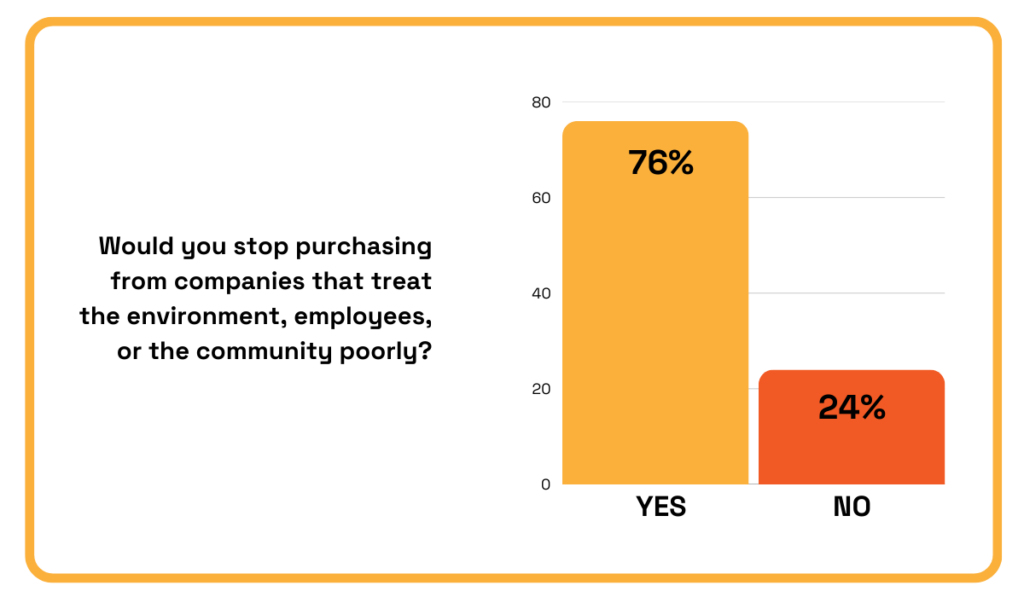
Illustration: Veridion / Data: PwC
Naturally, this growing consumer pressure doesn’t stop at your own operations.
It extends across your entire supply chain, turning supplier location into a direct reputational concern.
That’s why assessing region-specific indicators such as corruption risk, air and water quality, and ESG performance rankings is now an essential part of supplier evaluation.
But gathering and analyzing all this data manually would be slow and inefficient—if not impossible.
That’s where AI-powered supplier data platforms like Veridion come in.
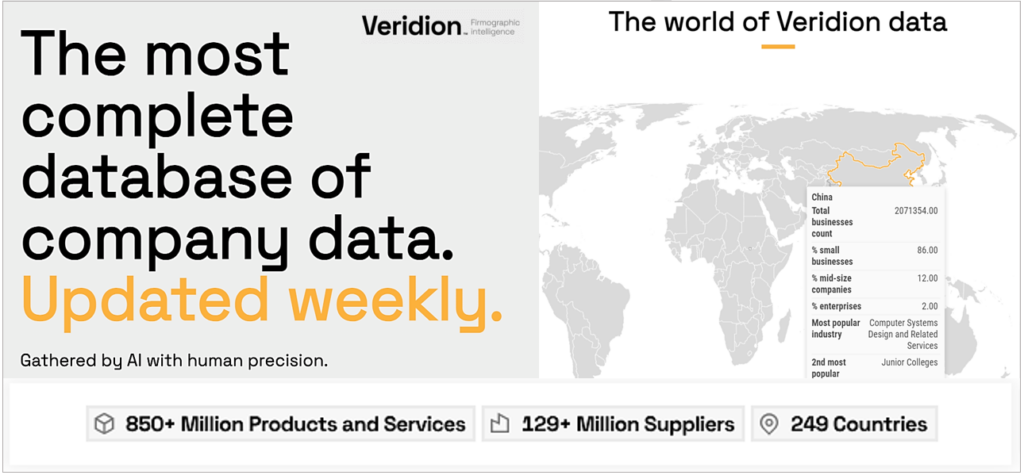
Source: Veridion
Veridion brings together supplier geographic data with ESG metrics, emissions profiles, labor laws, and environmental regulations to deliver real-time, location-aware insights.
In short, it makes the global supplier discovery fast, scalable, and precise.
You simply enter your search criteria using natural language, like in this example:
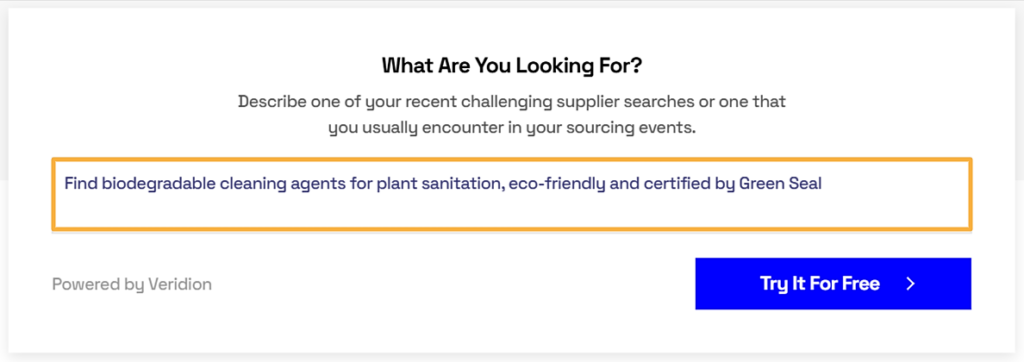
Source: Veridion
In this case, Veridion returned over 10,000 qualified suppliers from around the world in just seconds.
Had the search included location-specific instructions like “in the APAC region except Japan,” the results would’ve matched the criteria precisely.
This level of precision allows procurement teams to filter suppliers by both sustainability performance and region-specific ESG indicators, making it easier to identify and shortlist the right candidates.
That’s the power of location intelligence: it transforms supplier discovery into a smarter, faster path to sustainable procurement.
True supply chain transparency goes beyond surface-level visibility.
It requires understanding the environmental, social, and regulatory context behind each supplier location.
But that’s easier said than done, especially when you don’t have reliable ESG data.
To illustrate, consider the top ESG adoption challenges cited by institutional investors in a 2024 Capital Group survey:
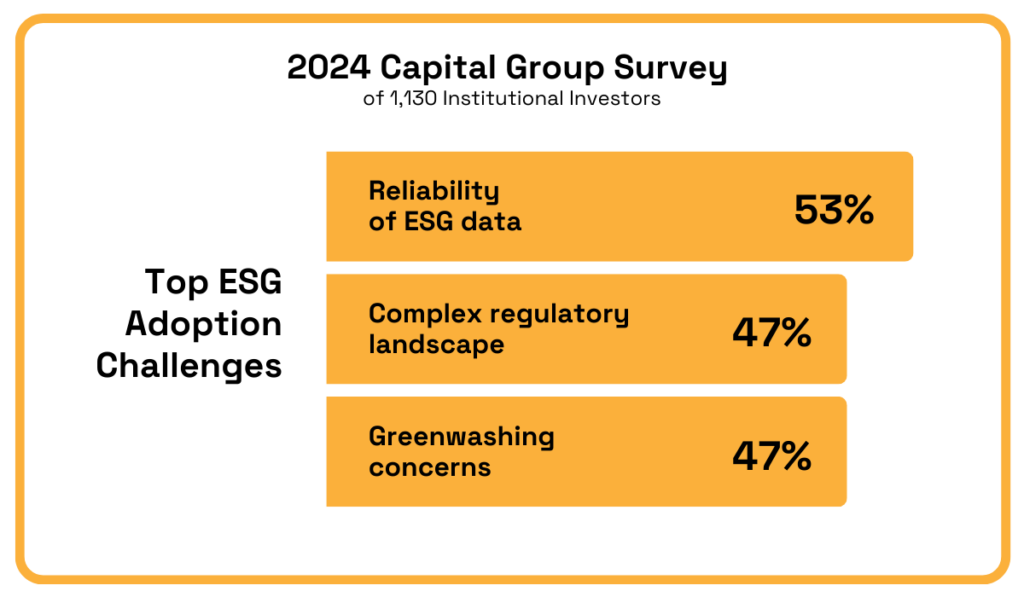
Illustration: Veridion / Data: Capital Group
These challenges are exactly where supplier location intelligence makes a meaningful difference.
By layering geospatial data with ESG metrics, regulatory details, and third-party assessments, it reduces reliance on inconsistent or self-reported data.
It also helps teams navigate complex regulatory landscapes by identifying suppliers located in high-risk areas or jurisdictions with stringent ESG mandates.
Most importantly, it offers objective, location-based evidence that can expose or prevent greenwashing.
As more countries introduce anti-greenwashing regulations, others, like Malaysia, are actively considering them.
Mohideen Abdul Kader, president of the Consumers Association Penang, supports such measures to rebuild trust among consumers and investors:
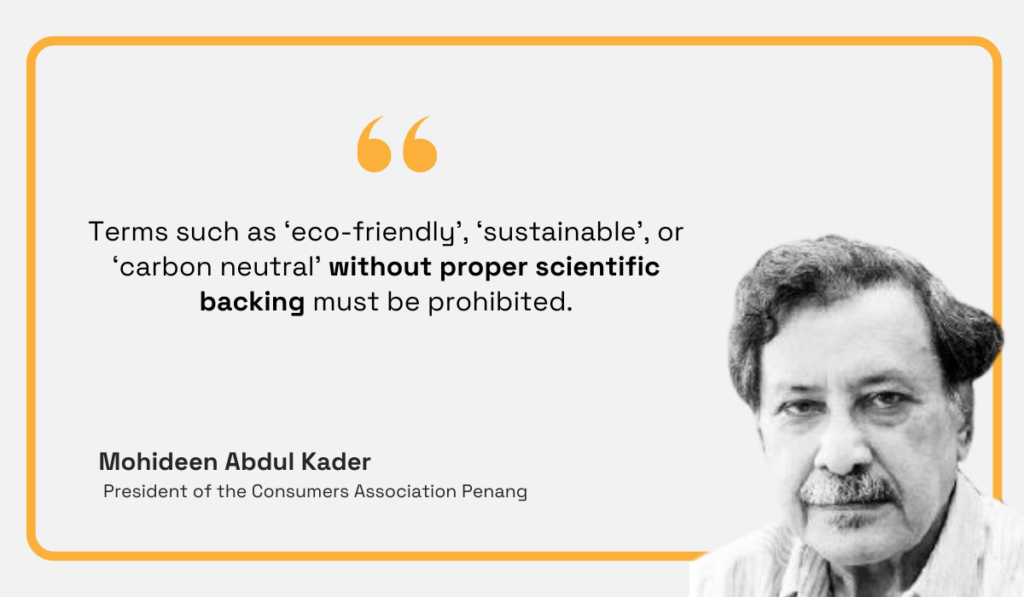
Illustration: Veridion / Quote: The Edge Malaysia
Even in the absence of specific regulations, supplier location intelligence helps verify ESG claims by cross-referencing reported data with objective, third-party insights.
Another benefit is the ability to visualize your supply chain, ideally including tier 2 and even tier 3 suppliers, by mapping the locations of their facilities.
Cindy Elliott, Head of Business Industry Sector Teams at Esri, notes that there’s value in having a simple map of supplier sites.
But she adds that the key is in the additional data:
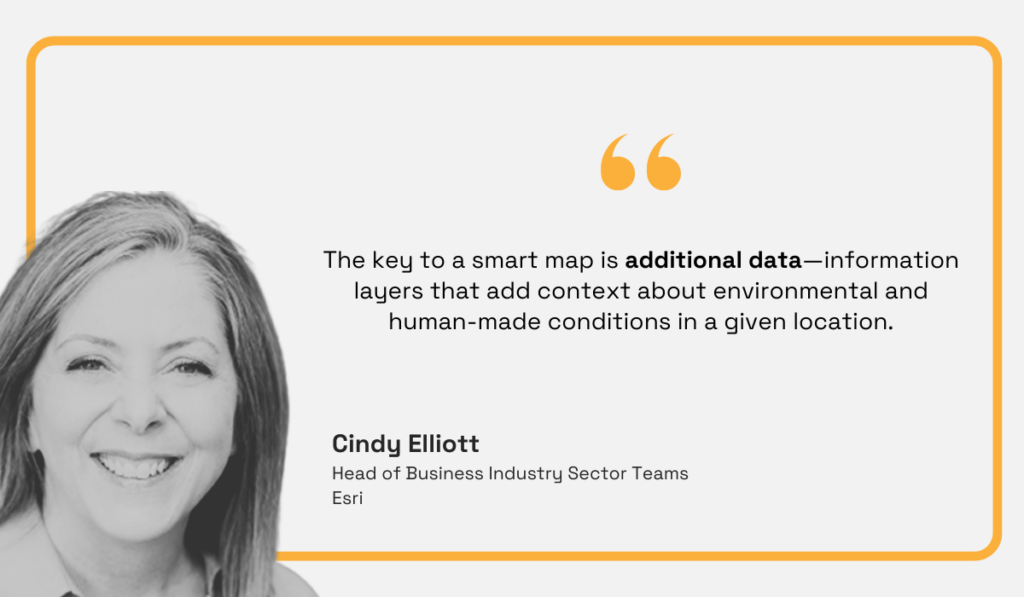
Illustration: Veridion / Quote: Esri
To build layered, interactive maps, you should combine insights from supplier data platforms with GIS tools like Esri ArcGIS or Google Earth Engine.
These maps help procurement teams visualize supply chains, spot blind spots, and uncover hidden risks.
Once your suppliers are mapped, the next step is identifying which locations may be ESG hotspots and why that matters.
Not all supplier locations carry the same level of ESG risk.
Some regions are more prone to environmental degradation, labor rights violations, or weak regulatory enforcement.
When many suppliers are concentrated in one area, these risks can multiply, making it crucial to understand not just who your suppliers are, but exactly where they operate.
That’s where ESG hotspot detection enters the stage.
By combining location intelligence with ESG risk indicators, procurement teams can identify high-risk geographies and prioritize monitoring.
The map below shows how ESG risks differ across countries.
Darker green shades indicate higher overall risk based on ESG factors.

Source: Risk Indexes
While country-level ESG risk scores provide a useful overview, hotspot detection becomes far more powerful when combined with issue-specific data.
Take deforestation, one of the most pressing environmental challenges tied to sustainability performance.
By integrating forest loss data from sources like Global Forest Watch (GFW), procurement teams can identify suppliers operating near rapidly deforested areas.
This allows for proactive risk assessment and more responsible sourcing.
Below is a map illustrating global deforestation levels, highlighting regions where environmental risks are especially concentrated.

Source: GFW
Similar maps can be generated to detect hotspots for other ESG risks, such as forced labor, conflict zones, or regions with weak worker protections.
By overlaying supplier locations with ESG datasets and risk indicators, procurement teams can move beyond surface-level assessments and make smarter, data-driven sourcing decisions.
When it comes to existing suppliers, these insights help teams prioritize high-risk areas and tailor their sustainability efforts, which brings us to the next section.
Location data helps companies move beyond generic sustainability goals by enabling targeted, region-specific action.
Different regions often vary widely in their access to renewable energy, labor laws, and infrastructure.
That’s why companies must adapt their sustainability strategies to local realities, not just global ambitions.
Take renewable energy, for example.
In 2021, IKEA launched a supplier renewable energy program in three key markets:
Through this initiative, IKEA provided suppliers with tailored local solutions, such as framework agreements and power purchase agreements (PPAs), to access renewable electricity.
After proving successful, the company expanded the program to 14 additional countries in 2025.

Source: ESG Today
IKEA’s initiative shows that sustainability programs work best when they’re grounded in the regional context.
The tailored solutions reduced emissions where it mattered most—on the ground, not just on paper.
This geography-aware approach is increasingly critical, whether you’re introducing supplier training in Southeast Asia, supporting clean energy adoption in Latin America, or optimizing logistics for lower emissions in Europe.
Tailoring interventions to local realities also fosters long-term supplier engagement and improvement.
Of course, this starts with close supplier monitoring through audits and evaluations, which help identify performance gaps and create targeted development plans.
As Kristiina Tiilikainen of Lindström Group explains:
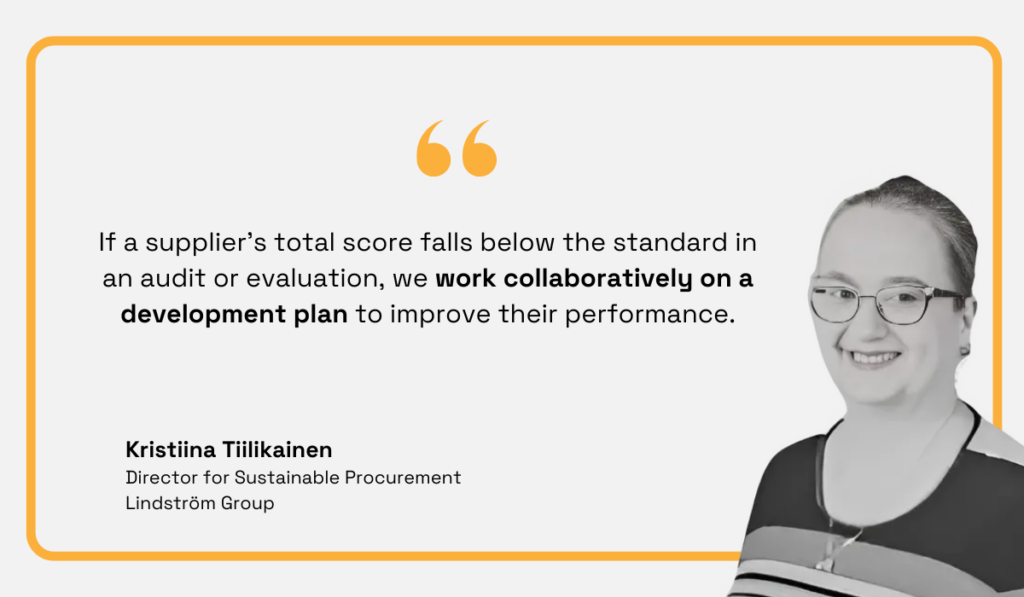
Illustration: Veridion / Quote: Lindstrom Group
While development plans are essential for improving supplier sustainability performance, their success often hinges on local dynamics.
Some suppliers may hesitate to participate in sustainability initiatives due to concerns about revealing cost structures or proprietary processes.
This resistance varies by supplier, but it’s especially common in regions where data sharing is culturally sensitive or regulatory protections are limited.
Without trust and mutual commitment, even the best-designed interventions can falter.
As Jonathan Webb of Procurement Leaders explains, a common blocker is the supplier’s fear of being left vulnerable in future negotiations:
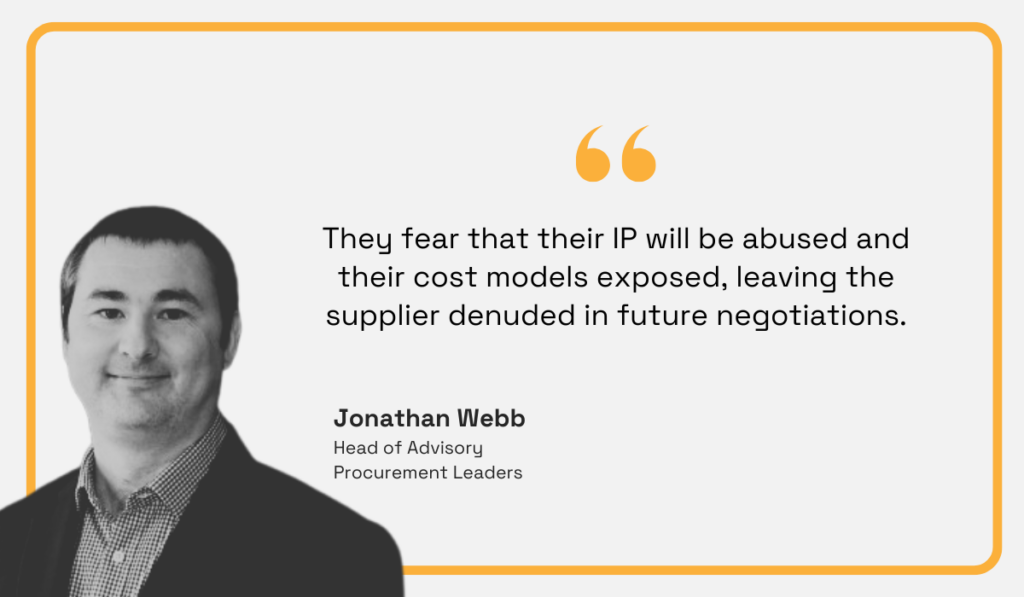
Illustration: Veridion / Quote: Forbes
This quote illustrates why tailoring interventions to local realities is essential—what works with one supplier in a particular region may fall flat elsewhere.
Sustainability efforts must be adapted to the context, whether that means offering targeted training, streamlining processes, or co-developing improvement initiatives.
Tailored, on-the-ground strategies enhance supplier performance and build long-term trust.
Anticipating ESG risks before they escalate is nowadays a necessity.
As climate-related disruptions, political instability, and evolving regulations become increasingly region-specific, procurement teams need tools that combine real-time data with geographic precision.
Supplier location intelligence makes this possible.
It reveals which suppliers are vulnerable to regional risks—whether it’s flooding in Southeast Asia, labor strikes in Latin America, or policy changes in the EU.
ESG risk assessment tools, like PwC’s platform shown below, help visualize these factors, enabling a shift from reactive crisis management to proactive, strategic planning.

Source: PwC
To support this kind of risk management, companies need access to granular, up-to-date ESG data—ideally broken down by region, industry, and supplier.
That’s where advanced ESG data platforms like Veridion add real value.
Such tools collect supplier data using detailed ESG taxonomies and continuously update it, providing real-time data feeds.
Here is Veridion’s comprehensive ESG data taxonomy:

Source: Veridion
This structure helps procurement teams filter suppliers by specific risk factors and pinpoint those most exposed to ESG challenges.
With data updated weekly, teams can also monitor when risks may intensify, allowing for timely and targeted intervention.
This kind of proactive ESG risk management is enabled by tools that offer automated, real-time risk alerts with data confidence scores.
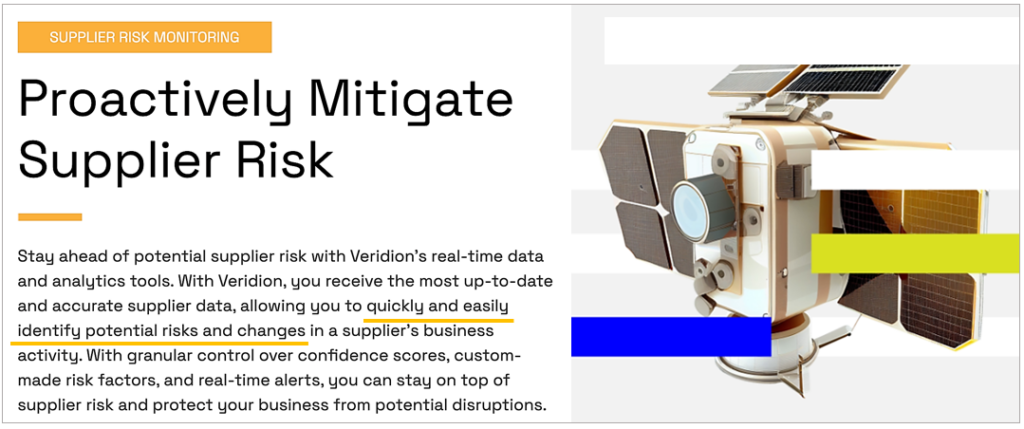
Source: Veridion
With ESG regulations surging by more than 150% globally over the past decade, the ability to forecast supplier risk has become a critical differentiator.
This foresight enables targeted action before problems escalate, reducing exposure and avoiding costly surprises.
In a world of accelerating change, predictive ESG risk management strengthens resilience and safeguards competitiveness.
From optimizing supplier selection and increasing supply chain transparency to anticipating ESG risks, the power of supplier location intelligence is clear.
Combined with other relevant data points, supplier location turns sustainability from a high-level ambition into a grounded, actionable strategy.
By understanding the environments in which suppliers operate, your team can detect ESG hotspots, tailor targeted interventions, and strengthen risk management.
With the right tools, you can turn geographic insight into smarter decisions—and build a more sustainable and resilient supply chain.